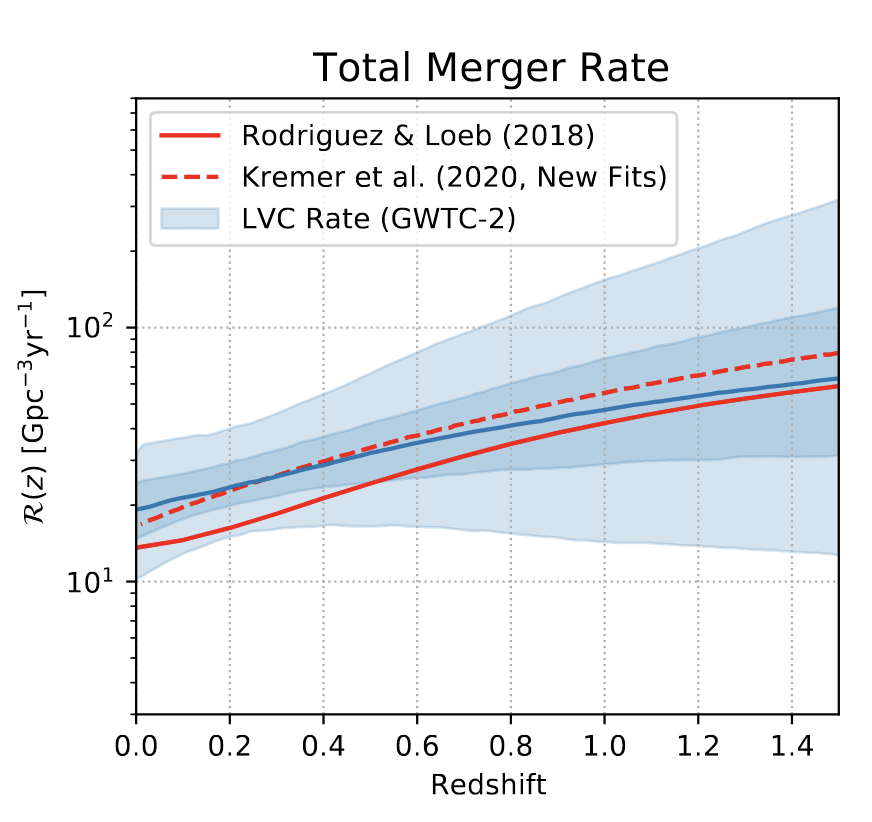In a new research note, we argue that it is now possible to explain the ENTIRE rate of merging binary black holes (BBHs) detected by LIGO with globular clusters. After the first detection (GW150914), the rate of BBH mergers that LIGO predicted was more than 200/Gpc^3/yr. Almost every formation channel predicted merger rates of around 1–10, so the conventional wisdom was that isolated binaries were the dominant channel. But now, with 50 BBH mergers, LIGO and Virgo have begun to constrain the redshift-dependent merger rate, and both the local rate (z=0) and the redshift evolution are consistent with many formation scenarios.
We showed this specifically for globular clusters, where our (Rodriguez & Loeb 2018) predictions from 2018 are now consistent with the phenomenological rate measured by the LIGO Virgo Collaboration:

We updated this using newer cluster models from Kremer et al. 2020, and it only improved. The title of the note is the most provocative part (intentionally so). The actual point of the note, however, is to emphasize that multiple formation scenarios can now explain the full LIGO/Virgo rate. To do science, you have to consider MULTIPLE SCENARIOS AT ONCE.